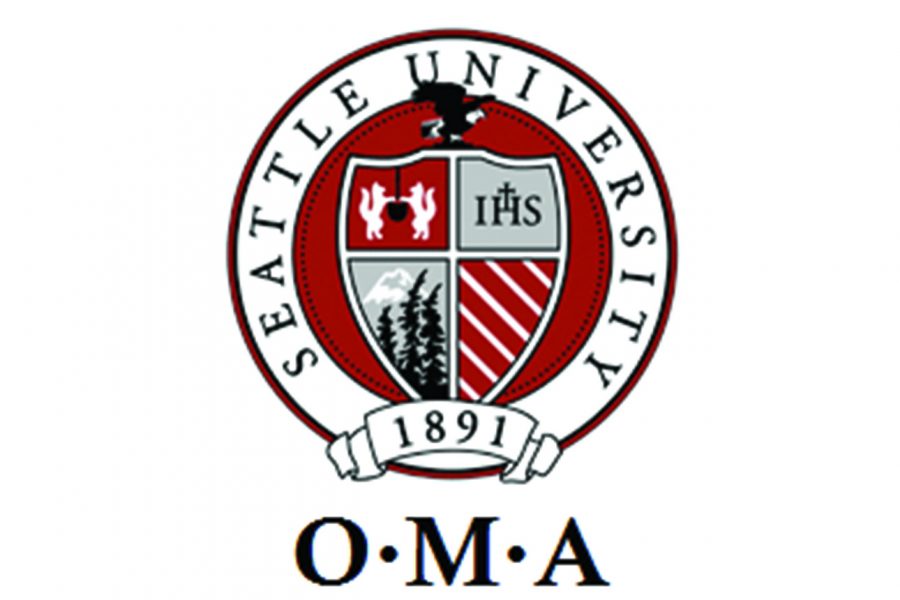OMA Celebrates 50 Years of Creating Inclusivity
The Office of Multicultural Affairs (OMA) is celebrating its 50th year at Seattle University. Of all the services it provides, it remains widely known as a home away from home for minority students and faculty.
As of today, OMA has many different services. In the eyes of Director Michelle Kim, the main purpose is to provide resources for students. This is accomplished through a variety of services, programs and resources meant for students that are, and have historically been marginalized.
“We make sure that our students have the resources and support to have the fairest chance and opportunity to succeed,” Kim said.
One resource for students is the Connections Leadership Program meant for incoming students of color. The program is meant to help students create connections with others from the same backgrounds and gain necessary information to be successful college students.
Another important service offered on campus is the food pantry. Open three times a week, students can go to the OMA lounge with their student IDs and shop for groceries without a cost. This is meant to aid students that may have limited or no access to food.
Additionally, OMA celebrates both the Lavender graduation for LGBTQ+ students and graduation for Students of Color, both meant to celebrate student’s accomplishments at the end of each academic year.
Since its establishment in 1969, OMA has changed throughout the years. It used to be called the Office of Minority Student Affairs (OMSA), and at the time was created to cater to the needs of their African American students during the civil rights movement.
Today, OMA works closely with all cultural clubs and organizations throughout the school year to promote inclusion and advocacy. It has grown to include more groups of individuals than just students of color and different cultures, but any minority group on campus with a marginalized history is welcome.
John Zimmerman, a 2014 alumnus at Seattle U, explains that without OMA, his time at the university would have been hard. Besides creating a safe space, Zimmerman believes that organizations like OMA are important because they allow for the flow of perspectives given that the demographics of the school are majority white upper-class students.
“That is where I would hang out, where I would study, where the majority of my friends came from, friends that I still have,” Zimmerman said. “We became much more active and hands-on and that was great.” OMA also creates a space where students get the chance to speak up and voice their opinions.
Zimmerman was also part of the Diversity and Equity Education Program (DEEP). Although the program is no longer active, its purpose was to assist with campus- wide diversity programming, training and workshops. At the time, the legalization of same- sex marriage was still not approved.
Students from DEEP protested in response to insensitive comments from Father Sundborg. Zimmerman’s ties with OMA made him feel comfortable enough to participate in other groups such as DEEP.
“We did this whole thing where we marched around campus with signs, there was singing and art, and we flooded the chapel pool with flowers,” Zimmerman said.
When faced with challenges on campus, Kim, who also worked as assistant director for three years, believes OMA’s biggest challenge in itself is fighting against a system designed for white men.
“Justice and equity doesn’t come overnight,” Kim said. Dale Watanabe, the director of the International Student Center believes OMA has been crucial in the development of the school since its establishment. Without it, the school would be failing to provide spaces of comfort for all its students.
“The fact that OMA has been a presence at SU for 50 years is a testament to the importance the SU community has put on making everyone feel welcome on our campus,” Watanabe said.
In the coming years, Kim wants to connect with OMA alumni to learn about how the office has grown. She would use this information to learn how students have overcome their struggles in the past and keep that history alive.
In Kim’s point of view, what’s to be most celebrated this year is not a specific program within OMA, but the sole fact that it’s been supported and kept alive for 50 years.
“OMA is home, or family or community, OMA is healing, resilience and empowering, and OMA is love.”
The editor may be reached at news@su-spectator.com


